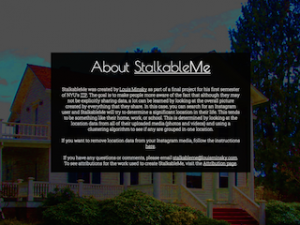Kaini Zhou
Mister Mister is a website documenting the stories between me and all the men I slept with, as a way to probe today's online dating scene, hookup culture, and the building and fading of interpersonal relationships in a contemporary urban environment from a young woman's perspective. The website encourages audience to think about their own stories and appreciate whoever wrote a story in their lives.
http://www.kainizhou.me/?p=171
Description
This website Mister Mister is a collection of individual profiles of guys I slept with. They might be my long-term relationship ex, or someone I met on Tinder. For each of them, I review the experience, give him an advice, and leave a note to myself. Viewers can write back to me if they think they are one of the guys or have slept with one of them.
I do not hope this project to be a brag about my sexual history. Instead, I take a closer look at people's mentality of dating, hooking up and having sex in general, and question myself on my growth as a woman. All the reviews are not graphic in any sense, because deep inside I think they are all interesting human beings. This is also a mark on myself to pause my online dating/hookup journey, and think about what I really need and want in this city at this age.
Classes
Comm Lab: Networked Media





